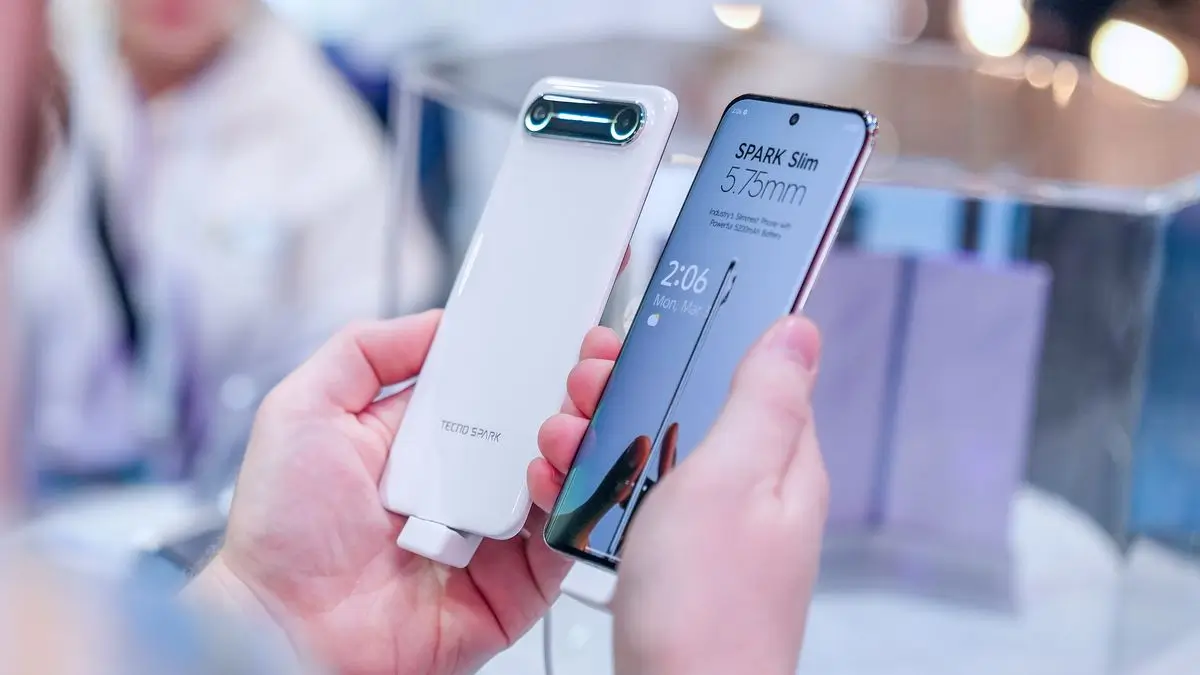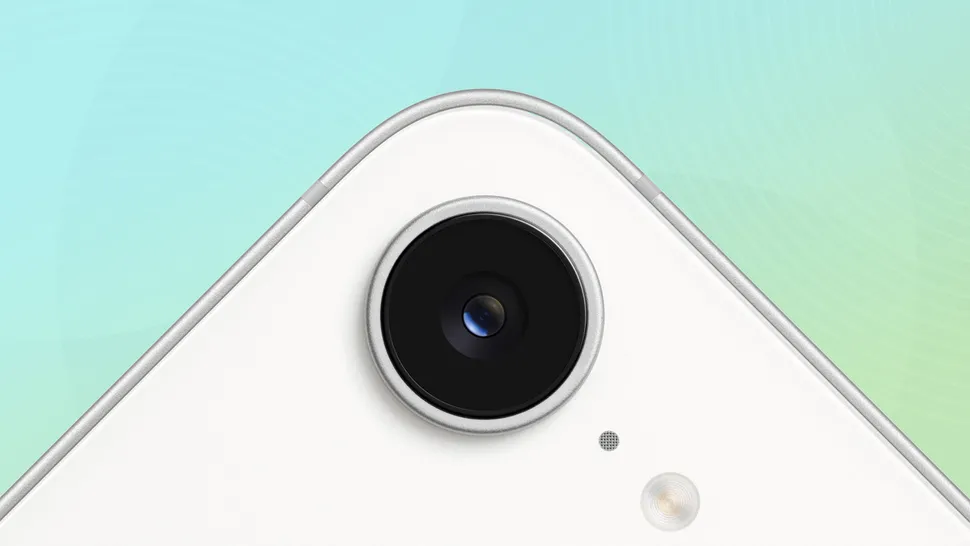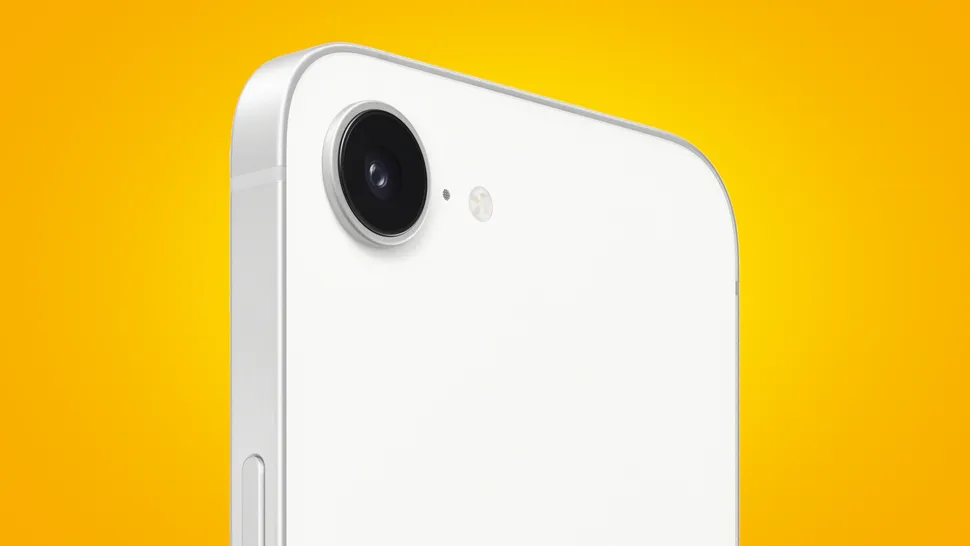iPhone 17 Air vs. Tecno Spark Slim: The Battle for the World’s Thinnest Phone!

Tecno Spark Slim vs. iPhone 17 Air
The world of smartphones is entering an era where thinness is more than just a design trend—it’s a statement of technological prowess. Recently, Chinese manufacturer Tecno unveiled the world’s thinnest slab phone, the Spark Slim, at MWC 2025, boasting a record-breaking 5.75mm profile (excluding its camera bump). But as if that weren’t enough, new leaks hint that Apple’s upcoming iPhone 17 Air might push the envelope even further, featuring an astonishing 5.44mm chassis. In this article, we’ll explore the emerging ultra-thin smartphone landscape, compare the leading contenders, and discuss what these innovations mean for consumers.
New Era of Slim Designs
The smartphone industry has traditionally balanced performance, battery life, and durability within a compact design. With consumer demand shifting towards sleek, lightweight devices, manufacturers are investing heavily in reducing thickness without compromising functionality. At MWC 2025, Tecno stole the show with its Spark Slim concept—a device that not only redefines thinness but also challenges the conventional trade-offs expected in ultra-slim phones.
Tecno’s Spark Slim impresses with a 6.78-inch OLED display that supports a 144Hz refresh rate, ensuring smooth visuals and vibrant colors. Despite its razor-thin profile, the phone is engineered to house a robust 5,200mAh battery—a feat that rivals flagship devices from Apple and Samsung. According to multiple trusted sources, including PCMag and Android Central, the Spark Slim offers an intriguing mix of performance and design innovation.

Race Heats Up
While Tecno’s concept has turned heads, rumors circulating online suggest that Apple is not sitting idly by. Leaks from credible tipsters on X (formerly Twitter) reveal a polymer dummy model of the upcoming iPhone 17 Air, measured at just 5.44mm at its thinnest point. This measurement, verified by images shared by notable leaker Majin Bu, implies that Apple’s “Air” branding isn’t just a nod to lightness—it may indeed define the next generation of ultra-slim smartphones.
The iPhone 17 Air is rumored to feature a long, narrow camera bar with a single lens, distinguishing it from the more elaborate multi-camera setups seen on the Pro models. Experts from Geeky Gadgets and PhoneArena indicate that despite this minimalist approach, Apple aims to balance aesthetics with performance.
Key Specifications and Design Trade-offs
Tecno Spark Slim
- Thickness: 5.75mm (at its thinnest point)
- Display: 6.78-inch AMOLED with 144Hz refresh rate
- Camera: Dual 50MP rear cameras and a 13MP front camera
- Battery: 5,200mAh capacity
- Build: A design that emphasizes both sleekness and a premium feel, despite using a protruding camera bump for functional reasons
According to Android Central, the Spark Slim’s design manages to incorporate a high-density battery technology that pushes past typical constraints of ultra-thin devices. Its ability to integrate a 5,200mAh battery—commonly seen only in thicker phones—highlights how new battery and internal component technologies are revolutionizing smartphone design.
iPhone 17 Air (Rumored)
- Thickness: 5.44mm, making it potentially the thinnest smartphone on the market
- Display: Expected to feature a high-resolution OLED screen with a 120Hz refresh rate; rumors suggest a screen size between 6.5 and 6.7 inches
- Camera: Likely to adopt a single-camera setup on the rear to minimize bulk, with a modest 48MP sensor and a 24MP selfie camera
- Battery: Speculated to contain a smaller battery, around 3,000mAh, as trade-offs for its extreme thinness
- Chipset and Performance: Expected to be powered by Apple’s A19 chip, possibly paired with 8GB of RAM, ensuring smooth multitasking despite its slim frame
- Design Philosophy: Echoing Apple’s “Air” legacy seen in products like the iPad Air and MacBook Air, the iPhone 17 Air is designed to emphasize portability, minimalism, and aesthetic elegance
| Feature | iPhone 17 Air | Tecno Spark Slim |
|---|---|---|
| Thickness | 5.44mm | 5.75mm |
| Display | 6.1" OLED, 120Hz, 2600x1200px | 6.78" AMOLED, 144Hz, 1.5K |
| Processor | A19 Bionic (3nm, AI) | Helio G99 Ultimate |
| RAM | 8GB | 8GB |
| Storage | 128/256/512GB | 256GB+microSD |
| Rear Camera | Dual 12MP | Dual 50MP |
| Front Camera | 24MP | 13MP |
| Battery | 3100mAh | 5200mAh |
| Charging | 25W MagSafe/USB-C | 45W Fast |
| OS | iOS 19 | Android 14+HiOS |
| Connectivity | 5G, Wi-Fi 6E, BT 5.3 | 5G, Wi-Fi 6, BT 5.2 |
| Security | Face ID | Fingerprint |
| Colors | Silver, Graphite+ | Various |
| Audio | Stereo, No 3.5mm | Mono, 3.5mm |
| Price | $899+ | $499+ |
| Release | Sep 2025 | Feb 2025 |
- Performance, Battery Life, and Practical Implications
The push towards ultra-thin designs comes with inherent trade-offs. One of the biggest concerns for consumers is battery life. Typically, thinner devices suffer from reduced battery capacity, and the iPhone 17 Air is no exception, with rumors suggesting a 3,000mAh battery—significantly lower than what is found in contemporary flagships.
However, Apple is known for optimizing battery performance through efficient chipsets and software. The rumored A19 chip is expected to bring improved energy efficiency, which could compensate for the smaller battery size. On the other hand, Tecno’s Spark Slim manages to integrate a larger 5,200mAh battery without sacrificing its ultra-thin profile. As noted by 9to5Google, Tecno’s approach might prove more practical for users who require longer battery life.
Moreover, manufacturers face challenges such as heat dissipation and structural durability when designing devices this slim. Thin phones have less internal space for cooling systems like vapor chambers, which might make them more susceptible to overheating. Both Apple and Tecno must therefore balance the desire for sleekness with the practical demands of everyday use.
Market Impact and Consumer Appeal
Ultra-thin smartphones have historically been a niche market, appealing mainly to tech enthusiasts and users who prioritize style over raw power. However, recent trends indicate a growing consumer appetite for devices that are not only powerful but also elegantly designed.
Tecno’s Global Strategy
Tecno, known primarily for its strong presence in emerging markets such as Africa, India, and Latin America, might struggle to capture significant market share in high-end segments dominated by Apple and Samsung. Its global release strategy and limited availability in regions like the US could restrict its impact despite its innovative design.
- Apple and Samsung
Apple’s rumored iPhone 17 Air is poised to be a game-changer in the premium smartphone category. With its ultra-slim profile and the cachet of the Apple brand, it is expected to resonate with consumers who favor minimalistic designs. Meanwhile, Samsung’s upcoming Galaxy S25 Edge is also vying for the title of thinnest flagship, rumored to measure around 5.84mm. Although details are still emerging, both companies are clearly pushing the limits of design and engineering.
Analysts predict that the competition in this segment will intensify over the next year. As reported by TechRadar and Hindustan Times, the race isn’t just about achieving record-low thicknesses—it’s about integrating high-performance components, battery technology, and durability in a package that consumers will actually want to use every day.
Read more
Future Trends in Ultra-Thin Smartphone Design
The move towards ultra-thin smartphones is more than a fleeting trend. It reflects broader technological advances in battery technology, chip design, and materials engineering. Future devices may adopt even more radical design innovations, such as foldable displays that are lighter and thinner or novel internal architectures that allow for larger batteries without increasing thickness.
Potential Innovations
- Advanced Battery Technologies
Companies are exploring new battery chemistries—like silicon-carbon or denser lithium-ion cells—that could provide higher capacity without additional bulk. This could be the key to addressing the battery challenges faced by ultra-thin devices.
- Improved Cooling Mechanisms
Engineers are looking into innovative cooling solutions that don’t rely on traditional vapor chambers, possibly using graphene-based materials to dissipate heat more efficiently.
- Material Science Breakthroughs
The use of stronger, lighter materials for phone frames and internal components could help maintain structural integrity even as devices become thinner. For example, hybrid materials that combine aluminum and glass may offer both durability and aesthetic appeal.
- Integration of AI and In-House Chipsets
Apple’s move to develop its own modems and chipsets—as seen with the rumored A19 chip in the iPhone 17 Air—reflects a broader trend towards vertical integration. This not only boosts performance but also allows for more refined control over the device’s design and power management.
What This Means for Consumers
For users, the arrival of ultra-thin smartphones like the Tecno Spark Slim and the iPhone 17 Air represents both an exciting innovation and a set of practical challenges. While these devices promise to offer stunning, modern designs with all the bells and whistles of today’s technology, potential trade-offs in battery life and thermal performance cannot be ignored.
Consumers who prioritize sleek design and portability may find these devices particularly appealing. On the other hand, power users who rely heavily on their smartphones for extended use might lean towards models that offer a better balance between thinness and battery endurance.
| Feature | iPhone 17 Air | Tecno Spark Slim |
|---|---|---|
| Display | 6.1" OLED, 120Hz, Dynamic Island | 6.78" AMOLED, 144Hz |
| Processor | A18 Bionic (Apple Intelligence) | MediaTek Dimensity 920 |
| Camera | 48MP main, Ultra-wide, AI enhancements | 50MP main, Ultra-wide |
| Battery Life | 3,100mAh, 20W Fast Charging | 5,200mAh, 45W Fast Charging |
| Price | Starts at $999 | Starts at $499 |
| Wireless Charging | MagSafe (15W) | Qi Wireless (10W) |
| 5G Support | mmWave & sub-6GHz 5G | Sub-6GHz 5G |
| Performance (Geekbench 6) | Single-Core: 3,200 | Multi-Core: 8,500 | Single-Core: 920 | Multi-Core: 2,700 |
📌 Pros & Cons
- ✅ iPhone 17 Air: Ultra-thin, Apple Intelligence, 120Hz display
- ❌ iPhone 17 Air: Smaller battery, expensive
- ✅ Tecno Spark Slim: Huge battery, affordable, 144Hz display
- ❌ Tecno Spark Slim: Slower processor, no mmWave 5G
Final Thoughts
The race to produce the world’s thinnest smartphone is not merely about setting new records—it’s about redefining what users can expect from their mobile devices. The Tecno Spark Slim and the upcoming iPhone 17 Air exemplify how far technology has come, offering ultra-slim designs without completely sacrificing performance.
As more details emerge, it will be fascinating to see whether the trade-offs required for such extreme thinness pay off in real-world usage. Will Apple’s streamlined iPhone 17 Air capture the imagination of design aficionados, or will Tecno’s bold innovation with the Spark Slim prove to be the most practical solution in the ultra-thin category? Only time will tell.
For now, tech enthusiasts can revel in the fact that the competition is pushing manufacturers to think creatively, resulting in devices that are as much a piece of art as they are high-performance tools. Whether you’re an early adopter or a cautious consumer, these developments signal that the future of smartphones is set to be thinner, smarter, and even more visually striking.
Frequently Asked Questions
The Tecno Spark Slim is 5.75mm thick, while the upcoming iPhone 17 Air is rumored to be 5.44mm.
Display: 6.78" AMOLED, 144Hz
Cameras: Dual 50MP rear, 13MP front
Battery: 5200mAh
The Tecno Spark Slim features a 5200mAh battery, while the iPhone 17 Air is expected to have a 3100mAh battery.
Reduced battery life, heat management issues, and potential durability concerns.
Consumers who prioritize design and portability but may sacrifice battery life.
Advanced battery technology, innovative cooling systems, and stronger materials.
Rivalries between brands fuel innovation, yielding better consumer choices.


Michael David is a forward-thinking AI content creator and Cambridge University graduate. Skilled at crafting concise, engaging narratives, he merges creativity with emerging technology to captivate audiences worldwide.
Michael provides specialized writing, content strategy, and portfolio curation for tech-focused brands. With a sharp eye for detail, he delivers timely projects that elevate brand presence and spark genuine reader engagement.
 [email protected]
[email protected]









